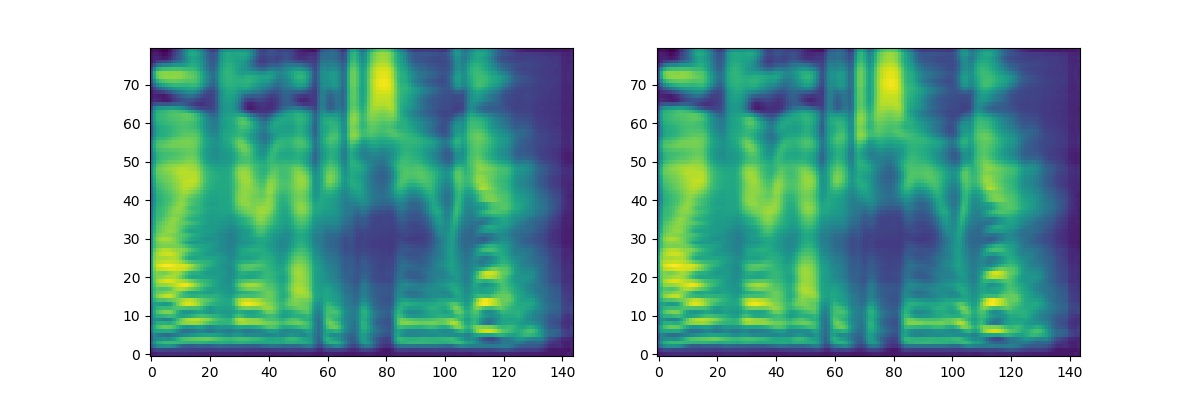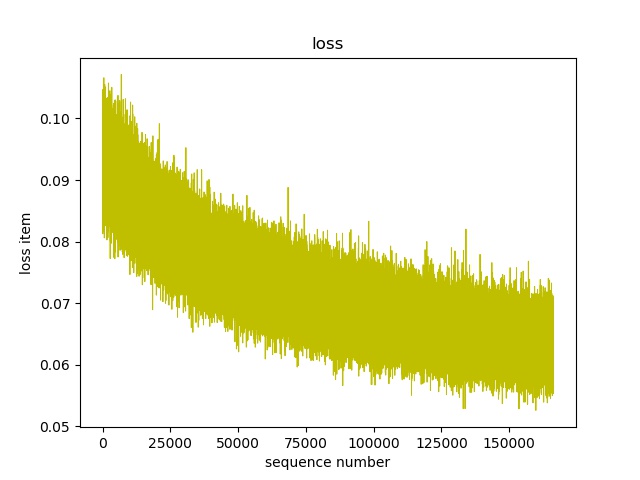FastSpeech-Pytorch
The Implementation of FastSpeech Based on Pytorch.
Model
My Blog
Start
Dependencies
- python 3.6
- CUDA 10.0
- pytorch 1.1.0
- numpy 1.16.2
- scipy 1.2.1
- librosa 0.6.3
- inflect 2.1.0
- matplotlib 2.2.2
Prepare Dataset
- Download and extract LJSpeech dataset.
- Put LJSpeech dataset in
data. - Run
preprocess.py.
Get Alignment from Tacotron2
Note
In the paper of FastSpeech, authors use pre-trained Transformer-TTS to provide the target of alignment. I didn't have a well-trained Transformer-TTS model so I use Tacotron2 instead.
Calculate Alignment during Training (slow)
Change pre_target = False in hparam.py
Calculate Alignment before Training
- Download the pre-trained Tacotron2 model published by NVIDIA here.
- Put the pre-trained Tacotron2 model in
Tacotron2/pre_trained_model - Run
alignment.py, it will spend 7 hours training on NVIDIA RTX2080ti.
Use Calculated Alignment (quick)
I provide LJSpeech's alignments calculated by Tacotron2 in alignment_targets.zip. If you want to use it, just unzip it.
Run (Support Data Parallel)
Note
In the turbo mode, a prefetcher prefetches training data and this operation may cost more memory.
Normal Mode
Run train.py.
Turbo Mode
Run train_accelerated.py.
Test
Synthesize
Run synthesis.py.
Results
- The examples of audio are in
results. The sentence for synthesizing is "I am very happy to see you again.".results/normal.wavwas synthesized whenalpha = 1.0,results/slow.wavwas synthesized whenalpha = 1.5andresults/quick.wavwas synthesized whenalpha = 0.5. - The outputs and alignment of Tacotron2 are shown as follows (The sentence for synthesizing is "I want to go to CMU to do research on deep learning."):
- The outputs and alignment of FastSpeech are shown as follows (The sentence for synthesizing is "I want to go to CMU to do research on deep learning."):
Loss Curve
The total_loss curve recorded from 30000th step to 140000th step is shown as follows:
Notes
- If you want to use another model to get alignments, you need rewrite
alignment.py. - The returned value of
alignment.pyis a tensor whose value is the multiple that encoder's outputs are supposed to be expanded by. For example:
test_target = torch.stack([torch.Tensor([0, 2, 3, 0, 3, 2, 1, 0, 0, 0]),
torch.Tensor([1, 2, 3, 2, 2, 0, 3, 6, 3, 5])])- The output of LengthRegulator's last linear layer passes through the ReLU activation function in order to remove negative values. It is the outputs of this module. During the inference, the output of LengthRegulator pass through
torch.exp()and subtract one, as the multiple for expanding encoder output. During the training stage, duration targets add one and pass throughtorch.log()and then calculate loss. For example:
duration_predictor_target = duration_predictor_target + 1
duration_predictor_target = torch.log(duration_predictor_target)
duration_predictor_output = torch.exp(duration_predictor_output)
duration_predictor_output = duration_predictor_output - 1


